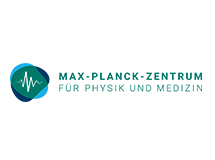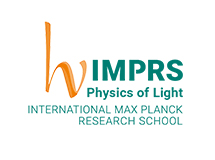Publications
2024
2023
Backward Rocket Propulsion of Particles Optically Trapped in Hollow-core Photonic Crystal Fiber
CLEO: Science and Innovations 2023 (2023)
2022
Temporal Self-Compression and Self-Frequency Shift of Submicrojoule Pulses at a Repetition Rate of 8 MHz
Physical Review Applied 18 064069 (2022) | Journal
2021
2020
Seven-octave high-brightness and carrier-envelope-phase-stable light source
Nature Photonics 15 277-280 (2020) | Journal
Covariance spectroscopy of molecular gases using fs pulse bursts created by modulational instability in gas-filled hollow-core fiber
Optics Express 28(23) 34328-34336 (2020) | Journal
Modulational-instability-free pulse compression in anti-resonant hollow-core photonic crystal fiber
Optics Letters 45(14) 4044-4047 (2020) | Journal
Efficient single-cycle pulse compression of an ytterbium fiber laser at 10 MHz repetition rate
Optics Express 28(7) 9099-9110 (2020) | Journal
2019
Pump-Probe Study of Plasma Dynamics in Gas-Filled Photonic Crystal Fiber Using Counterpropagating Solitons
Physical Review Applied 12 064015 1-6 (2019) | Journal
Carrier-envelope-phase-stable soliton-based pulse compression to 4.4 fs and ultraviolet generation at the 800 kHz repetition rate
Optics Letters 44(20) 5005-5008 (2019) | Journal
Generation of 1.5 cycle pulses at 780 nm at oscillator repetition rates with stable carrier-envelope phase
Optics Express 27(17) 24105-24113 (2019) | Journal
Fabrication and non-destructive characterization of tapered single-ring hollow-core photonic crystal fiber
APL Photonics 4 056105 1-6 (2019) | Journal
Spatio-temporal measurement of ionization-induced modal index changes in gas-filled PCF by prism-assisted side-coupling
Optics Express 27(10) 14392-14399 (2019) | Journal
Direct characterization of tuneable few-femtosecond dispersive-wave pulses in the deep UV
Optics Letters 44(4) 731-734 (2019) | Journal
2018
Long-Lived Refractive-Index Changes Induced by Femtosecond Ionization in Gas-Filled Single-Ring Photonic-Crystal Fibers
Physical Review Applied 10(6) 064020 1-5 (2018) | Journal
UV Soliton Dynamics and Raman-Enhanced Supercontinuum Generation in Photonic Crystal Fiber
ACS Photonics 5(6) 2426-2430 (2018) | Journal
Effect of anti-crossings with cladding resonances on ultrafast nonlinear dynamics in gas-filled photonic crystal fibers
Photonics Research 6(2) 84-88 (2018) | Journal
before 2018
Generation of microjoule pulses in the deep ultraviolet at megahertz repetition rates
OPTICA 4(10) 1272-1276 (2017) | Journal
Continuously wavelength-tunable high harmonic generation via soliton dynamics
OPTICS LETTERS 42(9) 1768-1771 (2017) | Journal
Mid-infrared dispersive wave generation in gas-filled photonic crystal fibre by transient ionization-driven changes in dispersion
NATURE COMMUNICATIONS 8 813 (2017) | Journal
PHz-Wide Spectral Interference Through Coherent Plasma-Induced Fission of Higher-Order Solitons
PHYSICAL REVIEW LETTERS 118(26) 263902 (2017) | Journal
High average power and single-cycle pulses from a mid-IR optical parametric chirped pulse amplifier
OPTICA 4(9) 1024-1029 (2017) | Journal
Extremely broadband single-shot cross-correlation frequency-resolved optical gating using a transient grating as gate and dispersive element
REVIEW OF SCIENTIFIC INSTRUMENTS 88(7) 073106 (2017) | Journal
Generation of three-octave-spanning transient Raman comb in hydrogen-filled hollow-core PCF
OPTICS LETTERS 40(6) 1026-1029 (2015) | Journal
As2S3-silica double-nanospike waveguide for mid-infrared supercontinuum generation
OPTICS LETTERS 39(17) 5216-5219 (2014) | Journal
Multimode ultrafast nonlinear optics in optical waveguides: numerical modeling and experiments in kagome photonic-crystal fiber
JOURNAL OF THE OPTICAL SOCIETY OF AMERICA B-OPTICAL PHYSICS 31(2) 311-320 (2014) | Journal
Low loss hollow optical-waveguide connection from atmospheric pressure to ultra-high vacuum
APPLIED PHYSICS LETTERS 103(26) 261115 (2013) | Journal
PHz-wide Supercontinua of Nondispersing Subcycle Pulses Generated by Extreme Modulational Instability
PHYSICAL REVIEW LETTERS 111(3) 033902 (2013) | Journal
Single-mode hollow-core photonic crystal fiber made from soft glass
OPTICS EXPRESS 19(16) 15438-15444 (2011) | Journal





